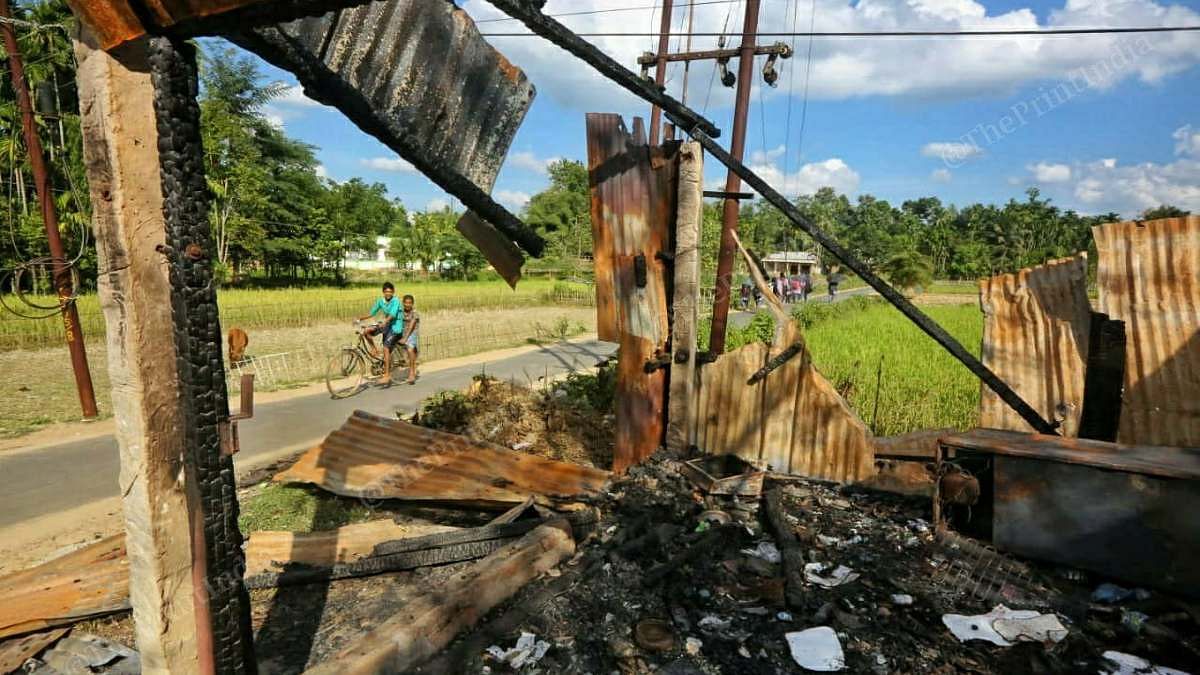Guwahati: It was the 9 am flight from Delhi to Guwahati on 1 November I had been eagerly waiting for for over a month, perhaps longer still. It had been a little over a year since I spent three months in Assam, Nagaland and Manipur covering Covid. That stint had only made me more eager to come back to the region.
But as I reached Guwahati, I was daunted by the enormity of the job at hand. A difficult terrain, a new and complex context, and a region that to a large extent remains neglected by mainstream news media — I was more than aware of the fact that this will perhaps be the most significant and challenging assignment of my life.
And within a week I was proven right.
At the time, Tripura was in news over reports of attacks on mosques across the state. The situation became all the more complicated when the state police filed UAPA cases against more than 102 social media users over their posts regarding the prevailing situation.
As I stood amidst unpacked cartons in my new flat in Guwahati, I received a call from my editor to get on a flight to Agartala to look into these incidents and draw on the truth of what had occurred.
800 kms, over 30 eyewitnesses and 3 districts
I reached Agartala on 9 November where I was joined by my photographer, Praveen Jain. We spent the first day doing some reconnaissance, which involved meeting people and drawing together a list of places to visit.
Of 12 sites where incidents had been reported, we planned to visit 10 in the next three days.
First up was Panisagar, a town that is 400 km away from Agartala in the district of North Tripura. On 26 October, the Chamtilla and Rowa areas close to the town had witnessed a series of incidents including the vandalism of a mosque, and the ransacking and arson of several Muslim-owned shops.

These incidents had occurred during the time the Vishwa Hindu Parishad unit in the area had taken out a rally in protest against a previous incident in Bangladesh where a Quran was placed in a Durga Puja pandal.
It was initially a little difficult to get eyewitnesses, especially those living around the mosque, to talk about the incident given their fear of retribution from whoever the perpetrators were. The police action in the past few days also seemed to have added to the atmosphere of fear.
This became even more evident when we were stopped by constables at a second dilapidated mosque near the town — which had also reportedly been vandalised — and told to seek permission from the police station.
When we arrived at the police station, the officer-in-charge took down our details and eventually allowed us to visit the spot. After gathering all the information from the site, we made our way back to Agartala.
But, the next day would bring on more police scrutiny. As we arrived in Bishalgarh, which was close to the second site on our list — Naraura — we were told to report to the local police station.
At the police station, the officer-in-charge told us that it may not be advisable to venture to the village given the “tense situation”. We remained insistent and he relented but had two police escorts follow us to Naraura.
While our discussions with the villagers went off without a hitch, we were approached by a man in plainclothes who identified himself as an officer with the district’s intelligence department. He took pictures of our identity cards and let us go.
By Saturday we had covered 10 sites covering over 800 kms and spoken to over 30 eyewitnesses. As Praveen and I sat in our hotel in Agartala stringing together the report, a tragic incident took place in Manipur’s Churachandpur district.
Seven people, including 46 Assam Rifles Commanding Officer Viplav Tripathi, his wife, son, and four other soldiers, lost their lives in an ambush by militants of two proscribed groups.
The next day, we were on a flight to Imphal.
Also read: Tripura mosque attacks: Ground report on what really happened during those 8 days in October
An uphill battle
While Tripura had proven to be a challenge in wrangling with law enforcement officers, the Manipur leg of our assignment was an exercise in persistence because of the road conditions.
As we attempted to reach the spot where the ambush had taken place, our vehicle — a large Scorpio — got stuck at a particularly muddy patch along the road from the Churachandpur district headquarters to the spot beyond S Sehken village where the incident had taken place.
Praveen and I took turns pushing the Scorpio, and with help from other locals who were also stranded, we managed to pull through. We finally made it to the spot — a beautiful but empty stretch along the Tedim road surrounded by forested hills.
The last 10 days had tested my limits, perhaps more than any of my previous assignments. It had been a thorough exercise in negotiation, patience, and perseverance, which I know I will certainly need more of in the time to come as a reporter covering the region.
But, as my mud-caked sandals stand witness, I can say that there could be nothing more fulfilling.
Also read: 10-ft-wide road, thicket of trees — Assam Rifles attack site a ‘textbook-perfect ambush spot’

